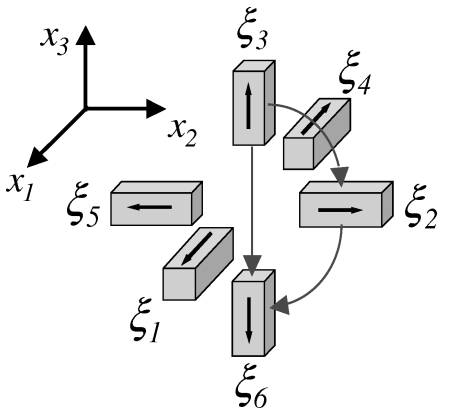A micromechanical approach utilizing the features of thermally activated domain wall motion is applied to simulate the structural changes in ferroelectric ceramics for the basic processes employed in piezoelectric devices. The approach combines an Arrhenius equation (with the temperature insensitive pre-exponential factor) for the domain wall mobility and a time-dependent constitutive model, using the volume fractions of domains with representative polarization directions as structural (internal) variables. Computer simulation of the piezoceramic poling process in a sheet actuator with interdigitated electrodes shows the formation of the inhomogeneous poling state and peculiarities of the nonlinear longitudinal piezoelectric effect.

A micromechanical approach utilizing the features of thermally activated domain wall motion is applied to simulate the structural changes in ferroelectric ceramics for the basic processes employed in piezoelectric devices. The approach combines an Arrhenius equation (with the temperature insensitive pre-exponential factor) for the domain wall mobility and a time-dependent constitutive model, using the volume fractions of domains with representative polarization directions as structural (internal) variables. Computer simulation of the piezoceramic poling process in a sheet actuator with interdigitated electrodes shows the formation of the inhomogeneous poling state and peculiarities of the nonlinear longitudinal piezoelectric effect.
